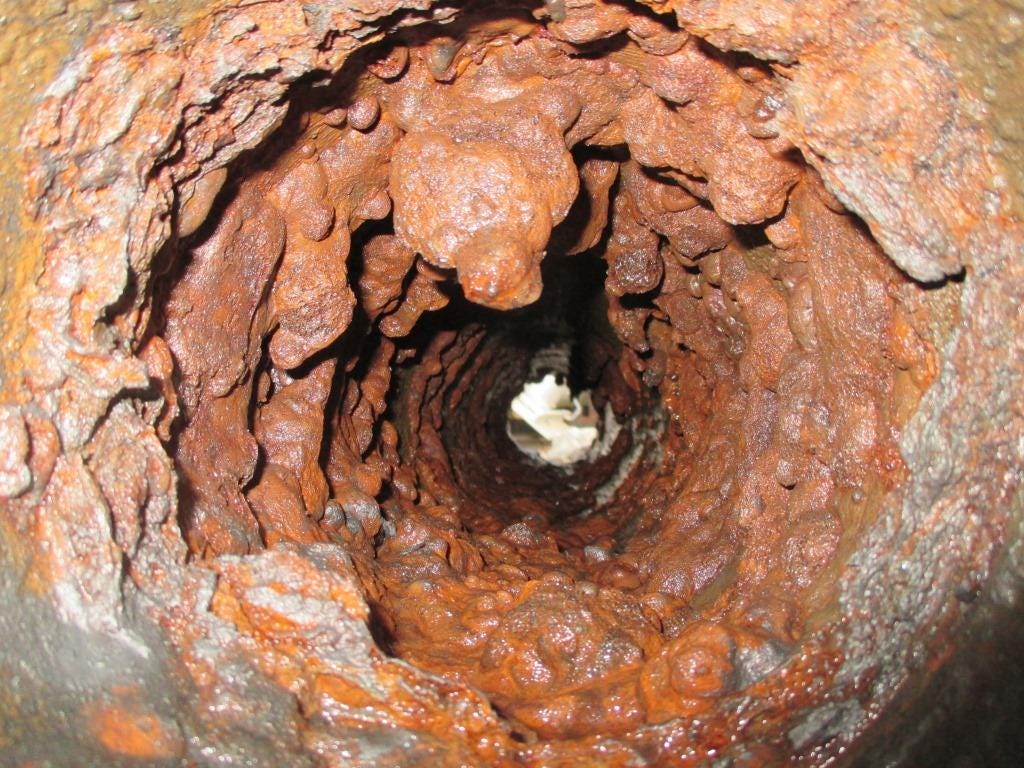When it comes to water, we all live in Flint.
And the problem with our water is not lead. Lead is a symptom of a systemic disease caused by a fundamental flaw in the entire precept for regulating drinking water in the United States.
 In fact, we don’t directly regulate our tap water. What we regulate is the water that comes out of a water treatment plant, miles away from our faucet. That water is then fed through a vast network of aging, corroded, leaking, bacteria-lined pipes to our homes, schools, and businesses, where it then passes through another set of pipes that are likely to be either held together with lead or even made entirely of this neurotoxic compound. Our regulations presume that the water treatment plant operator can control everything that happens to the water in those pipes simply by adding chemicals to the water leaving that plant. This is a bit like regulating food safety at restaurants by inspecting farms.
In fact, we don’t directly regulate our tap water. What we regulate is the water that comes out of a water treatment plant, miles away from our faucet. That water is then fed through a vast network of aging, corroded, leaking, bacteria-lined pipes to our homes, schools, and businesses, where it then passes through another set of pipes that are likely to be either held together with lead or even made entirely of this neurotoxic compound. Our regulations presume that the water treatment plant operator can control everything that happens to the water in those pipes simply by adding chemicals to the water leaving that plant. This is a bit like regulating food safety at restaurants by inspecting farms.
Furthermore, very little of the water regulated under the Safe Drinking Water Act is actually drinking water. It would be more accurate to call it the Safe Lawn Sprinkler Act or the Safe Toilet Water Act. For every gallon of water that we drink, we must purify about 200 gallons. This makes improving the quality of drinking water extremely expensive. Federal laws require that the Environmental Protection Agency consider those costs in writing rules for drinking water quality. As a result, we dumb down our standards for the water we drink so we can afford to purify the water we don’t.
It would be possible to eliminate the problem of lead in drinking water by replacing lead pipes, lead solder, and contaminated brass fittings in every house in America. Ultimately, we should try to achieve this, but doing so will require many years and massive government subsidies to accomplish. It will also not solve the systemic problem. What we really need is a way to insist that the water our children drink be of higher quality than the water used to wash the bathroom floor. This will require a new way of thinking about drinking water.
Some, including the British Royal Chemical Society, have proposed creating an entirely separate system for drinking water with its own pipe network, but this would be extremely costly and take decades to implement. A second alternative is to treat drinking water where we use it. The technology exists today to reduce all known toxic contaminants in our drinking water by a factor of 10 or more, right at our tap.
Point-of-use water filters already exist in homes today in everything from water pitchers to refrigerator water dispensers, but their application is inconsistent and there is no guarantee they treat the most important contaminants. In fact, most of these filters do little or nothing to control lead. If we really want to ensure the safety of drinking water for everyone (not just those with the resources and knowledge to employ appropriate filters), drinking water utilities can and should become involved in providing point-of-use filtration for every one of their customers. In collaboration with regulators, water suppliers can determine which filters are best suited to their water supply and help ensure that those filters are properly maintained.
In addition to removing lead, this final barrier protects us from chemicals such as pesticides or discarded medication that are often inadequately removed by treatment plants. It can also eliminate carcinogens formed when chlorine reacts with organic matter on its way to our homes. It might be our only protection if bioterrorists attack our water distribution system.
Water utilities understandably feel uncomfortable getting involved in what happens to drinking water inside a house, whether by removing lead pipes or introducing water filters. They prefer to simply supply water to the house. But houses don’t drink water, people do. We must learn the right lesson from Flint. It is time to reinvent our laws and regulations such that the Safe Drinking Water Act does what it says and gives us drinking water that is truly safe and not the product of a financial compromise.
